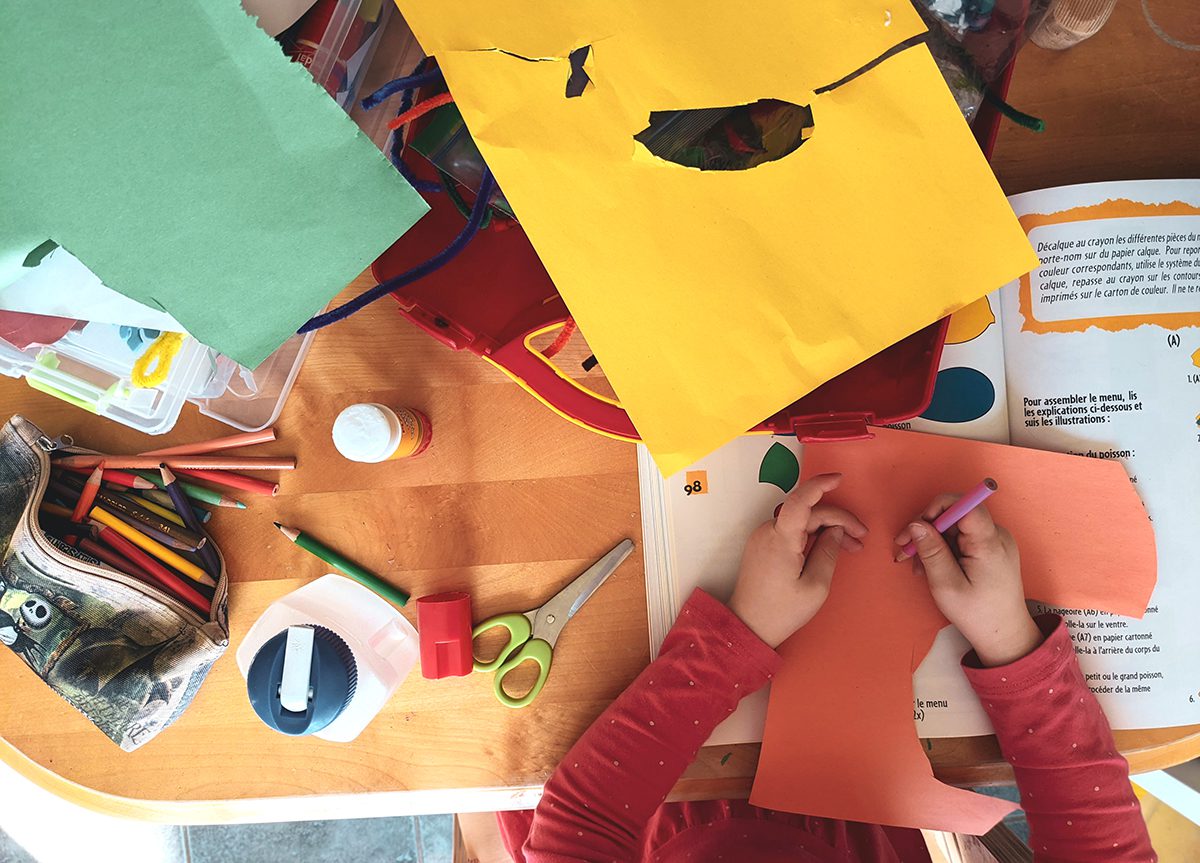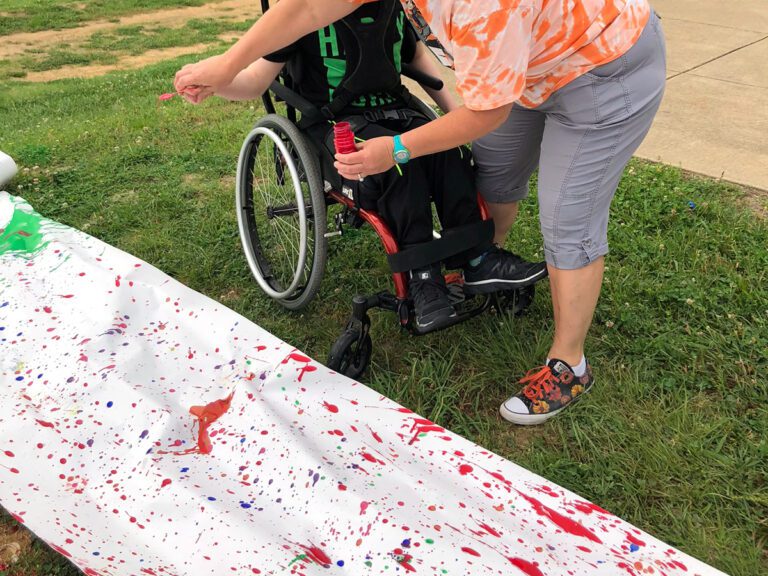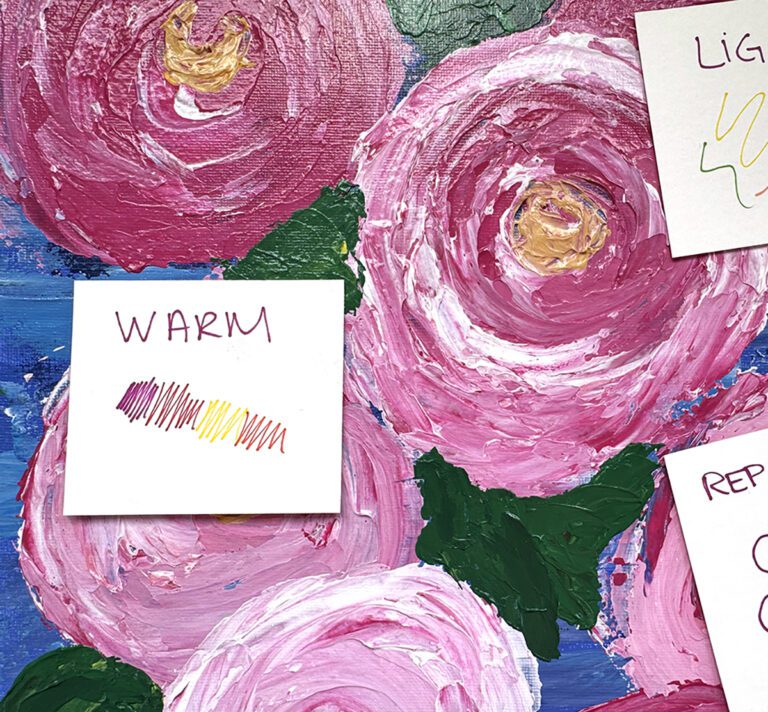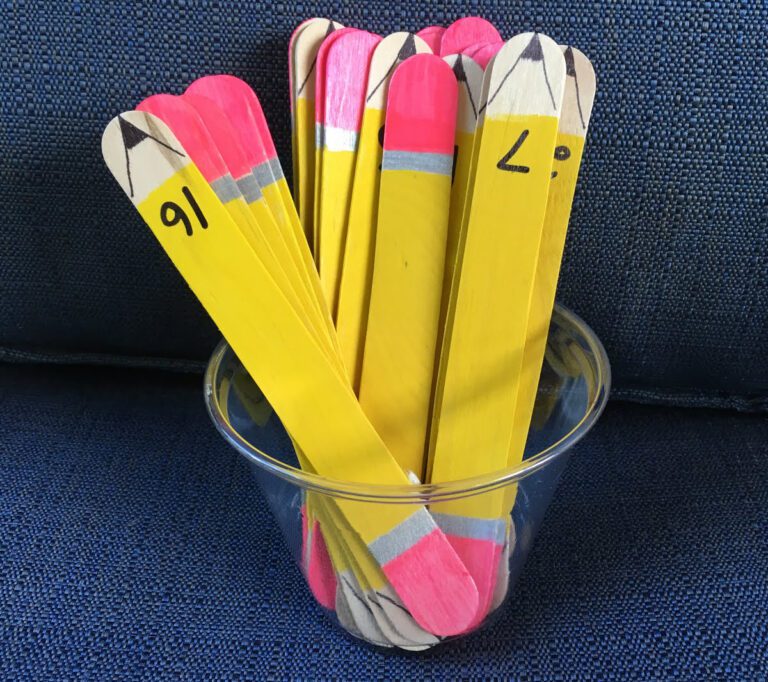English Language Learners (ELLs) are an ever-growing population in American schools. When an ELL student joins one of your classes, it is common to make unintended assumptions or draw on preconceived stereotypes. However, as is true for all students in our classrooms, each child is unique. They are unique in their artistic skills, background, support at home, and home language. We may not be fluent in our students’ home languages, but we can support our students to learn, grow, and become more confident in the art room.
Newcomers are students who were not born in the United States and have recently immigrated to the U.S. While most newcomers are ELL students, some may already be fluent in English. It is common for newcomers who are not fluent to have a silent year. A silent year is a year in which ELL students may appear uncommunicative. In reality, they are taking in their surroundings and the words of their peers and teachers. As a result, it may seem as if one day, they begin speaking out of nowhere. This is a valuable part of the process of learning a new language.
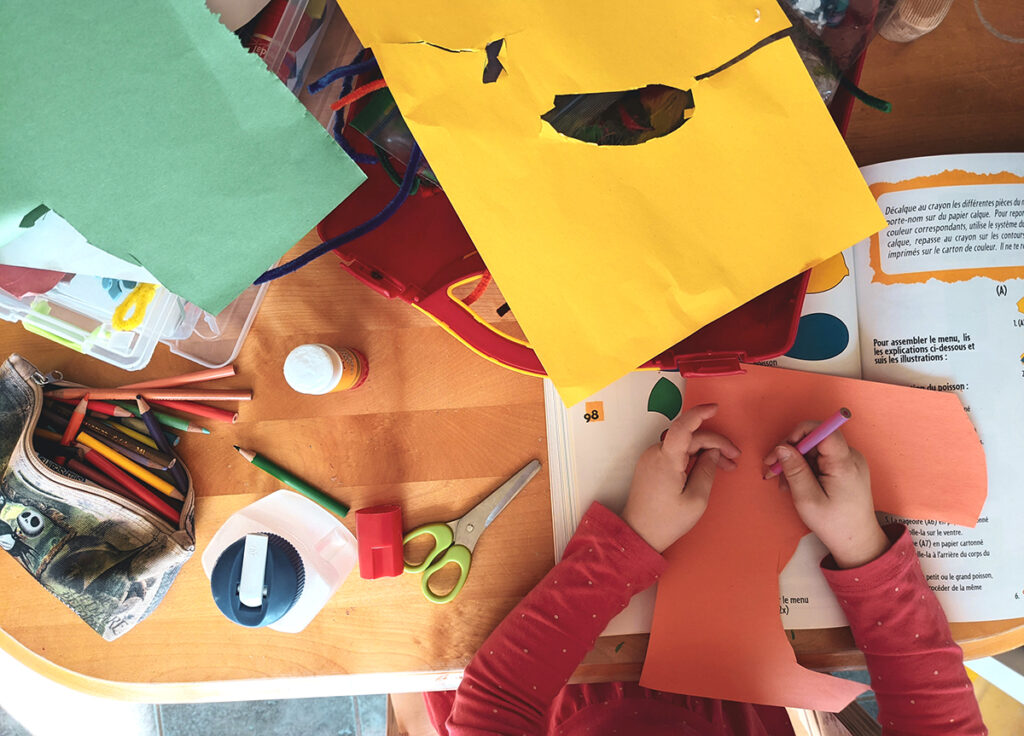
There are four skills associated with English language learning:
- Listening
- Reading
- Speaking
- Writing
ELL students learn and use these four skills at different paces, typically with listening and reading skills developing first. It may actually take five to seven years for students to become proficient in the English language.
Lauren Day, an educator who works with ELL students at the elementary level, offers up suggestions to not simply reach our ELL students but to help them thrive in the art room.
This is a universal design and not something extra.
When planning for instruction in the art room, ELL students should be considered part of the learning community and not seen as an extra responsibility or “other” group of students. Lauren Day remarks, “They should be doing whatever everybody else is doing. Not something different.” Just as we do for all students, we should provide opportunities for ELL students to make connections between new concepts and their previous learning. Establishing high expectations with scaffolded support will help all of your students set high standards for themselves.
Don’t forget the importance of vocabulary.
A significant aspect of language attribution involves vocabulary. Learning vocabulary in the art room can support learning in other instructional spaces. It also includes terms unique to visual art. It may seem that your students understand or are using vocabulary appropriately, however, Lauren Day shares it may take students up to seventeen times hearing a word to understand its meaning.
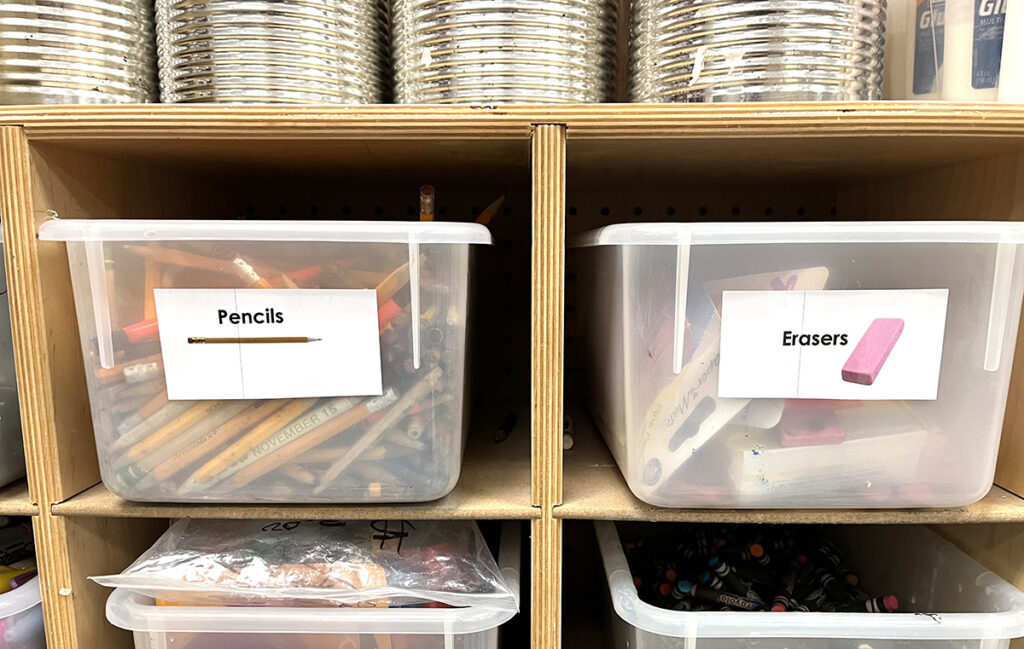
To support students in vocabulary acquisition in the art room, consider these strategies:
1. Establish a word wall.
Develop a word wall with commonly used art terminology. Position a visual next to the written vocabulary word to support recognition. For example, next to the word “oil pastel,” include an image of an oil pastel. The image will support students in differentiating between an oil pastel, a chalk pastel, and a crayon. While word walls are commonplace in most elementary classrooms, this is not just an elementary strategy. Lauren Day affirms that a word wall will assist all students of all ages in becoming more familiar with art room vocabulary.
2. Use visual cues and labels.
Images are not just for word walls. Include pictures of objects and vocabulary throughout the art room accompanied with the written English word. Label supply cabinets with images and text for students to locate what they need. High school art teacher Emily Henderson learned that many of her students speak and read Spanish at home. She labeled her classroom cabinets in English and Spanish. Though the goal is not for a bilingual classroom, the use of her students’ first language helps them make connections and feel comfortable and independent. You can read more about Emily’s classroom in the article Establishing Creative Sanctuaries—5 Tips to Redecorate and Reorganize for Back to School.
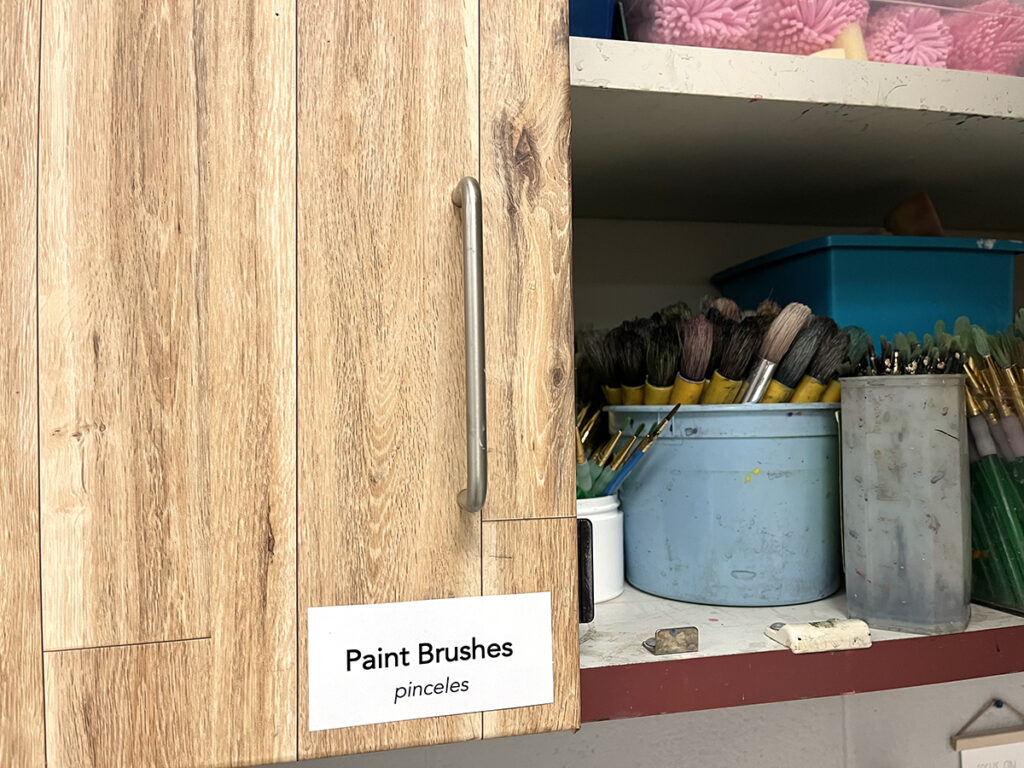
3. Share actual objects.
When in doubt, bring in actual objects. Lauren Day suggests that if you are discussing a still life, don’t assume students can identify all of the fruits in front of them. For instance, let’s say there is a pineapple in your still life. Show an actual pineapple; have students touch the fruit, and cut it open. This physical connection will help them understand and retain learned vocabulary.
Lauren warns that some words may be unknown to ELL students. It will occupy their thinking and limit their comprehension of the overall content. Their fixation on getting a single word “right” can become frustrating and keep students from achieving stated goals.

During a Daily Quick Draw Challenge, I prompted students to draw a “weight lifting PopTart®.” One of my students had no idea what a PopTart was and sat trying to decipher the words on the board. Much later he admitted why he didn’t participate in this activity. I realized that I even had a hard time explaining what this breakfast item was! I subsequently changed the prompt to “breakfast foods lifting weights.” The following week, I brought in a pack of PopTarts to show the student.
Bringing in actual objects and not making assumptions is best for all students. Several other students who come from more health-conscious homes also had no idea what a PopTart was!
Use explicit directions.
Take the time to define content objectives clearly. In doing so, your students will know what is expected of them. Though this is important for all your students, it is critical for students striving to understand what the expectations mean. These statements should be stated orally, as well as provided in written and visual form. For example, an image of the tools required or a quick illustration of the task can help clarify what students need or need to do to be successful.
Lauren Day stresses the benefits of direct instruction and intentional step-by-step directions. Both are helpful to lay a foundation for learning. It is also essential to provide students with an opportunity for open-ended artmaking after each instruction or set of directions. During this time, students apply what they have learned via direct instruction.
Translation apps are no replacement for an actual translator or students learning English, but they can support the teacher and student when important sentences must be communicated. This can include the general overview of a lesson or stressing safety protocols. Of course, not all languages spoken in our classrooms are available using a digital translation tool.
Another tip is to empower a classmate to assist an ELL student. Strategically seat the buddy near the ELL student. They can support their classmate by modeling behaviors, repeating instructions, and locating tools needed for artmaking.
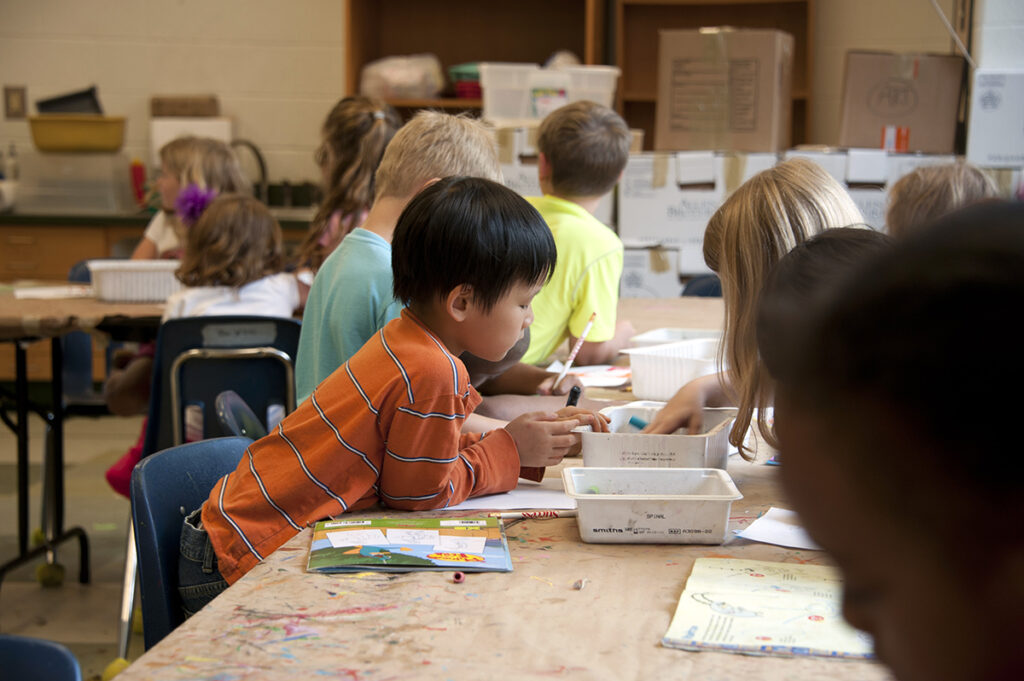
Honor traditions and countries of origin.
Feeling seen and valued is vital for all students, especially those experiencing a new language, culture, and expectations that are quite unlike their own. Help support students’ sense of belonging by using one or more of these strategies.
1. Share their experiences.
We are not asking students to represent an entire culture or language. Instead, we are providing ample opportunities for students to share their own personal lived experiences. Open-ended prompts allow students to draw on their experiences without seeking perfection with a particular skill. Visual art production provides a tool for ELL students to share their thinking and feelings without the use of written words. However, it is also important to provide time for students to orally share their work with their classmates. This time in conversation can support communication and awareness skills for all students involved.
2. Curate an artist of the month.
Thoughtfully select featured artists for an artist of the month board. Make sure to feature artists who reflect your newcomers’ countries and cultures of origin. Include a map of the world showing the location of this artist in comparison to your school. In addition, use this opportunity to print out words in the country’s official language. Consider including the names of the materials used by the artist in other languages. This purposeful act of inclusion can support students in seeing the art room as a place where they feel valued as individuals.
3. Design and post intentional display signs.
When displaying artwork in the hallway, include signage with the essential vocabulary used in the lesson. If possible, integrate some keywords in your ELL students’ home languages.
The new languages and different backgrounds and experiences our ELL students bring can contribute to a richer and more meaningful art room community. Regardless of what our students’ home languages are, it is vital to consider how we teach and reach all our students. It is our role to see each student as the individuals they are. We are tasked with supporting them through intentional lesson planning and a conducive learning environment, so they can thrive as artists. The learning of a new language takes time and it is a privilege to be a part of that process.
What languages are spoken by ELL students at your school? Who do you need to contact to determine this information?
How do you recognize your students’ cultures in your art room?
What other strategies do you use to support ELL students in your art room?
Magazine articles and podcasts are opinions of professional education contributors and do not necessarily represent the position of the Art of Education University (AOEU) or its academic offerings. Contributors use terms in the way they are most often talked about in the scope of their educational experiences.
